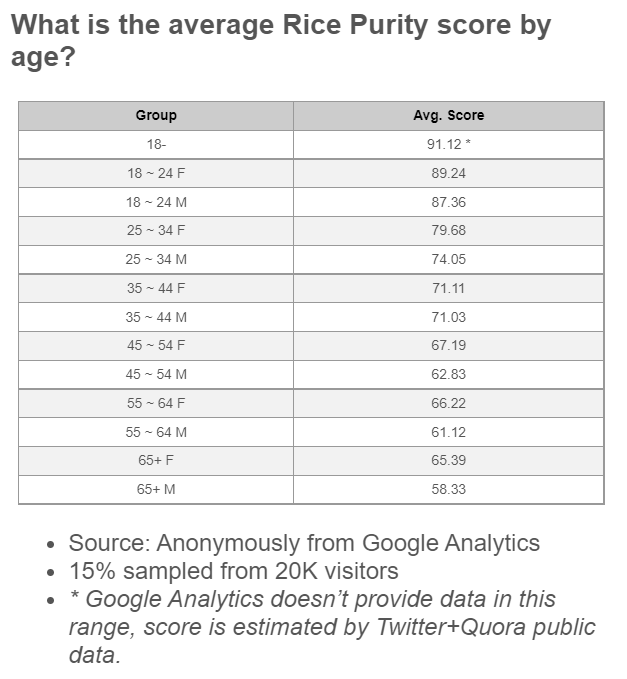
In today’s fast-paced world, where social norms and expectations are constantly evolving, it’s natural for young adults to navigate through a wide range of experiences and choices. One popular tool that has emerged to gauge the extent of these experiences is the Average Rice Purity Test. This comprehensive guide will provide you with all the essential information you need to know about the Average Rice Purity Test, helping you understand its significance and how it can be used as a self-reflection tool.
-
What is the Average Rice Purity Test?
The Average Rice Purity Test is a questionnaire designed to assess an individual’s level of experience across various aspects of life, particularly relating to intimate and social behaviors. It consists of a set of questions that require a “yes” or “no” response. The test aims to calculate a purity score on a scale of 0 to 100, with a higher score indicating a greater level of innocence or purity.
-
The Origins and Purpose of the Test
Originally created at Rice University, the Average Rice Purity Test was intended to provide a means of self-reflection for students and foster open discussions about personal experiences and decisions. Over time, it gained popularity and spread to other educational institutions and online platforms.
-
Taking the Test: What to Expect
When taking the Average Rice Purity Test, you’ll encounter a series of questions that cover various aspects of life, including intimate relationships, substance use, personal beliefs, and more. These questions are designed to prompt self-reflection and honesty, providing insights into your own experiences and decisions.
-
Interpreting Your Purity Score
Once you complete the Average Rice Purity Test, you’ll receive a purity score that reflects your level of experience. It’s important to note that the score should not be seen as a measure of your worth or character, but rather as a tool for self-awareness. The score can help you reflect on your choices and consider how they align with your personal values and goals.
-
Criticisms and Limitations of the Test
While the Average Rice Purity Test can be a useful tool for self-reflection, it’s important to recognize its limitations. The questions in the test are not exhaustive, and experiences vary greatly among individuals. Moreover, the test does not account for the context or emotional aspects associated with each experience. It’s crucial to approach the test with a critical mindset and understand that it is only one piece of the puzzle when it comes to self-reflection.
-
Using the Test as a Starting Point for Discussion
One of the key benefits of the Average Rice Purity Test is its ability to spark conversations about personal experiences and choices. By sharing your score with trusted friends or a support group, you can engage in meaningful discussions that promote understanding, empathy, and growth. Remember, the test should not be used to judge or compare yourself to others, but rather as a tool for fostering open and honest communication.
-
The Importance of Personal Growth and Self-Acceptance
While the Average Rice Purity Test may provide insight into your experiences, it’s essential to remember that personal growth and self-acceptance are ongoing journeys. Everyone’s path is unique, and there is no universal definition of purity or worth. Embrace your experiences, learn from them, and focus on becoming the best version of yourself.
In conclusion, the Average Rice Purity Test can be a thought-provoking and engaging tool for self-reflection and open discussions about personal experiences. By understanding its origins, taking the test with honesty and critical thinking, and using the results as a catalyst for growth and understanding, you can embark on a journey of self-discovery. Embrace your experiences, learn from them, and continue to nurture your personal growth and self-acceptance. Remember, your journey is unique, and you have the power to define your own path.







